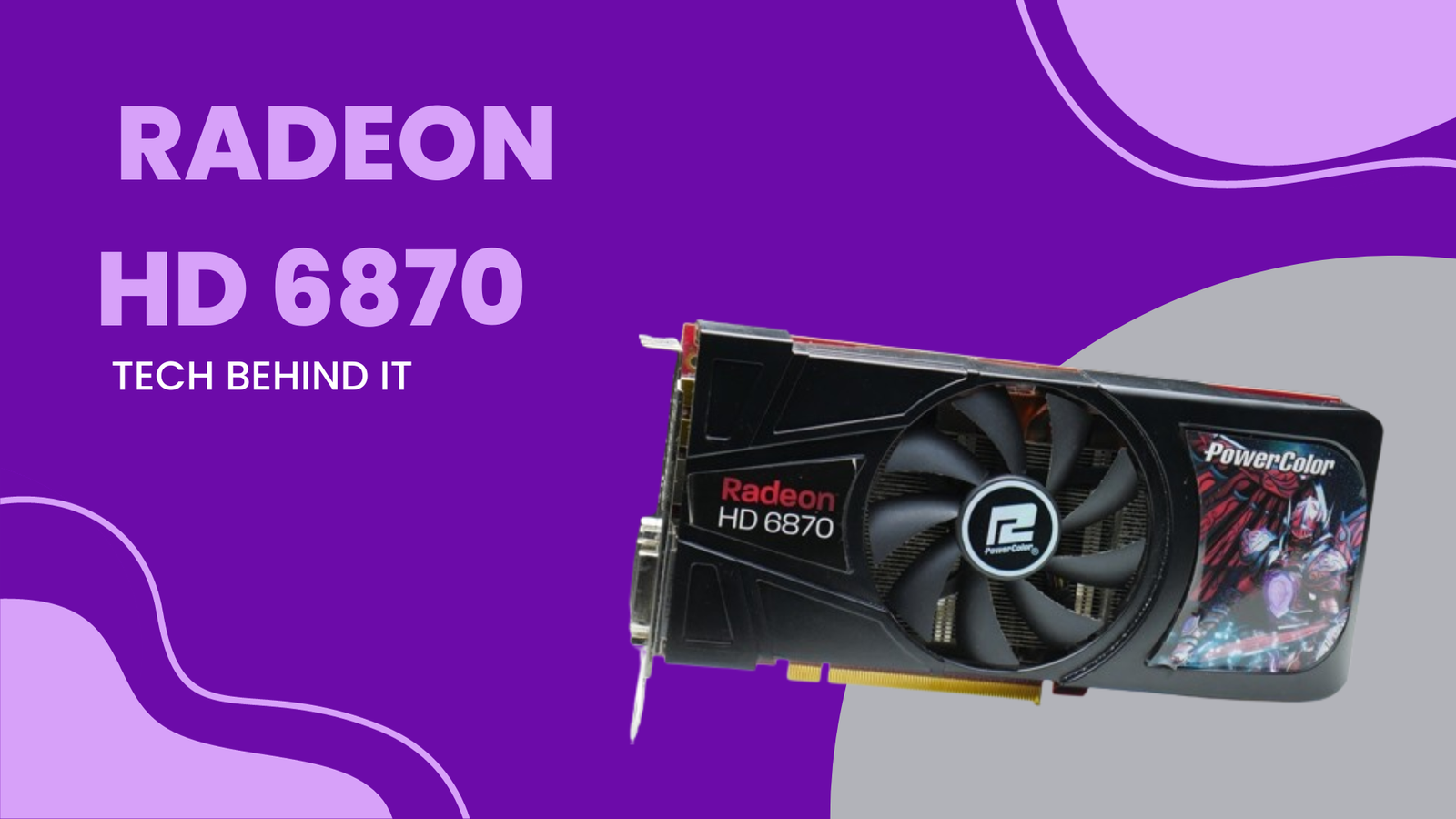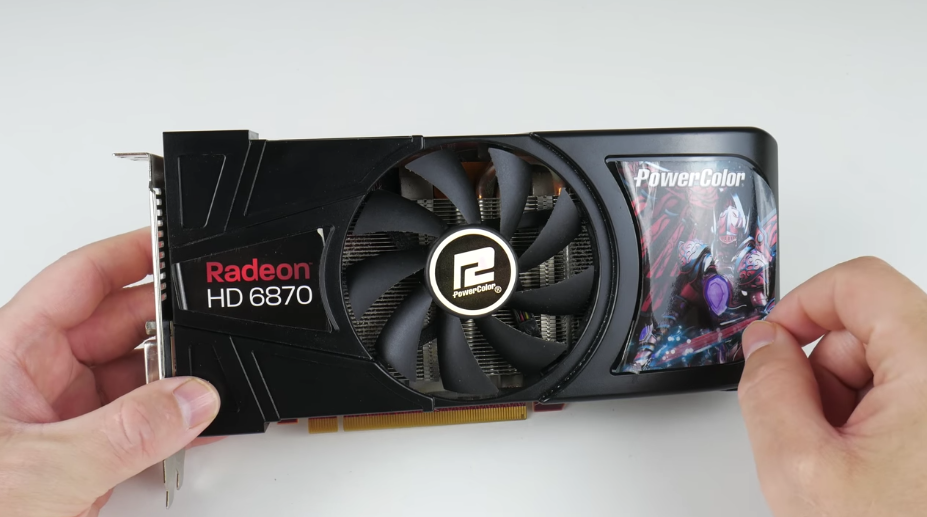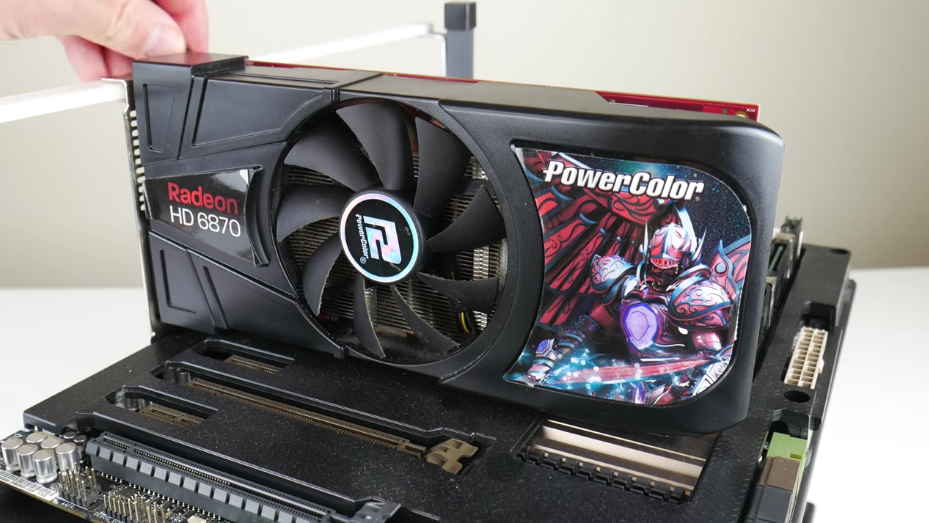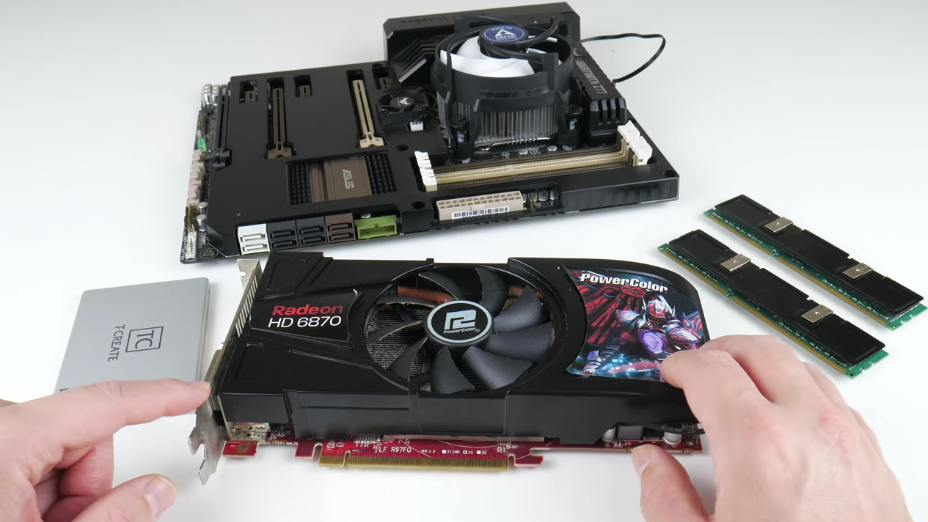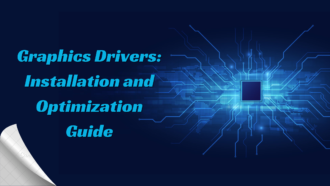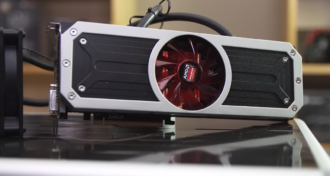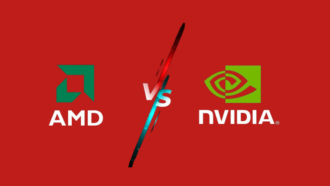Exploring the Radeon HD 6870: A Comprehensive Review of AMD’s Mid-Range Graphics Marvel
- 1 Radeon HD 6870 Specs
- 1.1 What is in the box?
- 1.2 Radeon HD 6870: Architectural and Technical Features
- 1.3 A Deep Dive into Memory and Bandwidth
- 1.4 Radeon HD 6870 with Eyefinity Technology for Immersive Multidisplay Experiences
- 1.5 Efficient Cooling and Sleek Form Factor
- 1.6 Top Features
- 1.7 Pros and Cons Of Radeon HD 6870
- 1.8 Should I buy a Radeon HD 6870?
- 2 Final thoughts and comparison
- 3 Conclusion
- 4 Frequently Asked Questions
AMD released Radeon HD 6870 in October 2010. It belongs to the Radeon HD 6000 series, a significant graphics card update. Designed for mid-range consumers, the HD 6870 offers thrilling entertainment and gaming.
AMD’s Radeon HD 5000 series has a great run, taking Nvidia six months to respond with Fermi devices. We called the Radeon HD 5870 a year ago a “real winner, and possibly one of the best graphics cards we have ever reviewed in this price point.” AMD released eleven graphics cards from affordable to ultra-expensive within five months of its initial DirectX 11 GPU. Unfortunately, Nvidia’s GeForce GTX 480 and GTX 470 arrived months later and weren’t as warmly received. To heat things, Nvidia released the GeForce GTX 465 two months after entering the DirectX 11 market. Unfortunately, the card failed, and it took six weeks for the GeForce GTX 460 to get into the DX11 GPU market.
Radeon HD 6870 Specs
| Architecture | TeraScale 2 |
| Stream Processors | 1120 |
| Core Clock | 900 MHz |
| Memory | 1GB GDDR5, 256-bit interface |
| Memory Clock | 1050 MHz |
| DirectX Support | 11 |
| Connectors | 2 DVI, 1 HDMI, 2 Mini-DisplayPort |
| Eyefinity Technology | Yes |
| HD3D Technology | Yes |
| Power Requirements | 2 x 6-pin PCIe connectors, TBP 151W |
| Cooling | Dual-slot design with active cooling |
| Form Factor | PCIe x16, Dual-slot |
| Release Date | October 2010 |
| Legacy | Ongoing driver support is still used in budget gaming setups. |
What is in the box?
- The AMD Radeon HD 6870 graphics card is the leading rendering and graphics processing component. It has the GPU, cooling solution, and power and display connectors.
- Installation, setup, driver installation, and troubleshooting are covered in user guides. Diagrams and step-by-step instructions assist consumers in maximising their graphics card.
- The driver disk contains graphics card drivers and applications. Please check the manufacturer’s website for the latest drivers, as those on the disk may be outdated.
- A graphics card like the AMD Radeon HD 6870 needs more power than the PCIe slot provides. To connect the graphics card to the power source, the box usually has 6-pin PCIe power connectors.
- Manufacturers may offer adapter cables to support different display devices depending on the card’s outputs. Many adapters connect DVI to HDMI, DisplayPort to HDMI, or both.
- Some manufacturers offer case badges with logos, cable ties for cable management, and promotional materials.
- Box may contain warranty terms and conditions. This helps explain the manufacturer’s warranty coverage and length.
- An anti-static bag protects the graphics card from electrostatic discharge during shipping and handling.
Radeon HD 6870: Architectural and Technical Features
The TeraScale 2 architecture of the Radeon HD 6870 improved efficiency and performance. This architecture enhances tessellation, making supported games’ images more realistic. It supported AMD’s PowerTune technology, which dynamically altered clock speeds for power and performance. Shaders, or 1120 stream processors, performed complicated calculations and rendering. The 56 texture units processed textures, providing detailed and vivid graphics for games and apps. Final image rendering was done by 32 ROP (Raster Operation Pipeline) units, improving image quality.
A Deep Dive into Memory and Bandwidth
The Radeon HD 6870 included 1GB of GDDR5 video memory, balancing capacity, and speed. High memory bandwidth from GDDR5 gave the GPU fast access to textures and data. The GPU and RAM communicated well across the 256-bit memory interface, improving card performance. Radeon HD 6870 DirectX 11 functionality was a significant selling factor. Microsoft’s graphics API now has hardware tessellation for more realistic geometry, multithreaded rendering for efficiency, and Shader Model 5.0 for better visual effects. DirectX 11 games could use these capabilities for a more immersive and beautiful experience.
Radeon HD 6870 with Eyefinity Technology for Immersive Multidisplay Experiences
AMD Eyefinity support made the Radeon HD 6870 stand out. This allowed users to connect many monitors to a graphics card for a large, immersive display. Eyefinity improved gaming and was popular with professionals who needed many displays for productivity or content creation. Compatible monitors and programs could use AMD’s HD3D technology with the Radeon HD 6870. AMD wanted to provide 3D content to more people by providing an immersive visual experience for 3D gamers and content consumers.
Efficient Cooling and Sleek Form Factor
Dual-slot cooling was characteristic of the Radeon HD 6870s. The cooling fan dissipated heat from the operation, keeping the card cold. The dual-slot architecture improved airflow and heat dissipation, making the graphics card more stable and durable. Radeon HD 6870 TDP averaged 151 watts. It could be a more power-efficient card, but it is decent for its class. The card needed one or two 6-pin power connectors from the power supply. DVI, HDMI, and DisplayPort outputs gave the card options for display combinations.
Top Features
- The HD 6870’s TeraScale 2 architecture improves performance and economy. GPU efficiency and graphics processing improve with this design.
- GPUs include 1120 shaders, or stream processors, for parallel computing. This improves visuals and processing.
- DirectX 11 support gives the HD 6870 intense gaming and app visuals and effects.
- Eyefinity technology lets many monitors connected to a graphics card create an immersive and expansive display. This enhances multi-screen gaming, productivity, and content creation.
- Stereo 3D is supported with the HD 6870. This capability enhances gaming and multimedia on compatible monitors and apps.
- The graphics card contains 1GB of GDDR5 video memory on a 256-bit interface. This setup speeds up memory bandwidth, texturing, and data access.
- AMD PowerTune adjusts GPU thermals and clock rates. This technique optimises power and performance.
- HD 6870 users can use CrossFire to combine multiple graphics cards for better performance in supported apps and games.
- DVI, HDMI, and DisplayPort outputs are typical for monitor combinations.
- The HD 6870 can accelerate general-purpose processing processes with OpenCL, making it appropriate for compute-intensive applications. It supports OpenGL 4.2 for application graphics rendering.
Pros and Cons Of Radeon HD 6870
| PROS | CONS |
| The HD 6870 was appealing to budget gamers due to its competitive performance. | TeraScale 2, while effective, is now obsolete compared to RDNA or RDNA 2. |
| Eyefinity enabled massive and immersive multi-monitor installations, improving gaming and productivity. | Some current games and apps may not run well with 1GB VRAM, limiting performance at higher resolutions. |
| HD3D supported stereoscopic 3D for 3D gaming and multimedia content. | The card consumed more power than energy-efficient current GPUs due to its higher TDP. |
| Games and apps with DirectX 11 compatibility had enhanced visuals and visual effects. | |
| Active cooling in the dual-slot design kept operating temperatures consistent over time. |
Should I buy a Radeon HD 6870?
If you’re on a tight budget and can get the HD 6870 cheaply, it could be a temporary answer for basic computing or outdated games if you’re constructing or maintaining a legacy OS compatible with the HD 6870 and simply require it for light chores or older apps. The HD 6870 uses more power than newer graphics cards. More recent models are better for energy efficiency. Invest in a more unique graphics card to last years and support new software and games.
Final thoughts and comparison
The 2010 AMD Radeon HD 6870 is a sound mid-range graphics card. It was popular due to its TeraScale 2 architecture, 1120 stream processors, DirectX 11, Eyefinity, and HD3D support. The HD 6870 remains popular in budget-friendly settings because of AMD driver support. The HD 6870 was competitive, but current GPUs have better performance, energy economy, and features. GPU architectures beyond TeraScale 2 support RDNA or RDNA 2, improving graphics rendering, power efficiency, and feature sets. Modern GPUs support HDMI 2.1 and DisplayPort 1.4 for greater resolutions and refresh rates. Modern GPUs have ray tracing and AI, which improve graphics realism and enable advanced rendering techniques not available in the HD 6870. GPUs have more VRAM and quicker memory, improving demanding games’ and apps’ performance
Conclusion
The affordable Radeon HD 6870 was a tremendous mid-range graphics card with decent performance and sophisticated features. Its Eyefinity and HD3D features made it the most versatile graphics card in its class. AMD’s graphics card history includes the Radeon HD 6870, even if newer, more efficient versions have been released since then.
Frequently Asked Questions
How many GB is the Radeon HD 6870?
SAPPHIRE AMD Radeon HD 6870 1GB GDDR5 PCIE GPU.
What games can Radeon HD 6870 run?
Most new games can be played on High-Ultra with no AA at 1080p, except demanding ones like Far Cry 3 or Assassins Creed 3, which require dropping settings too high without Anti-Aliasing. Crysis 3 requires medium-high graphical settings to obtain playable FPS.
What power supply does the Radeon 6870 need?
On average, Radeon HD 6870 demands a 500-watt power supply.

